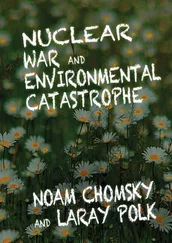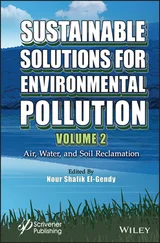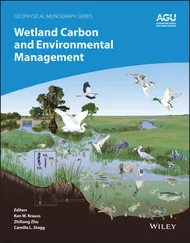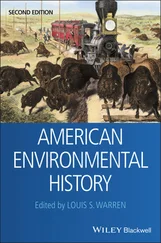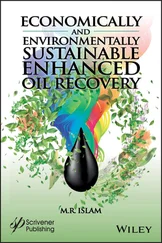359 361
360 362
361 363
362 364
363 365
364 366
365 367
366 368
367 369
368 370
369 371
370 372
371 373
372 374
373 375
374 376
375 377
376 378
377 379
378 380
379 381
380 383
381 384
382 385
383 386
384 387
385 388
386 389
387 390
388 391
389 392
390 393
391 394
392 395
393 396
394 397
395 398
396 399
397 400
398 401
399 402
400 403
401 404
402 405
403 406
404 407
405 408
406 409
407 410
408 411
409 412
410 413
411 414
412 415
413 416
414 417
415 418
416 419
417 420
418 421
419 422
420 423
421 424
422 425
423 426
424 427
425 428
426 429
427 430
428 431
Scrivener Publishing
100 Cummings Center, Suite 541J
Beverly, MA 01915-6106
Publishers at Scrivener Martin Scrivener ( martin@scrivenerpublishing.com) Phillip Carmical ( pcarmical@scrivenerpublishing.com)
Environmental and Agricultural Microbiology
Applications for Sustainability
Edited by
Bibhuti Bhusan Mishra
Suraja Kumar Nayak
Swati Mohapatra
Deviprasad Samantaray

This edition first published 2021 by John Wiley & Sons, Inc., 111 River Street, Hoboken, NJ 07030, USA and Scrivener Publishing LLC, 100 Cummings Center, Suite 541J, Beverly, MA 01915, USA
© 2021 Scrivener Publishing LLC
For more information about Scrivener publications please visit www.scrivenerpublishing.com.
All rights reserved. No part of this publication may be reproduced, stored in a retrieval system, or transmitted, in any form or by any means, electronic, mechanical, photocopying, recording, or otherwise, except as permitted by law. Advice on how to obtain permission to reuse material from this title is available at http://www.wiley.com/go/permissions.
Wiley Global Headquarters111 River Street, Hoboken, NJ 07030, USA
For details of our global editorial offices, customer services, and more information about Wiley products visit us at www.wiley.com.
Limit of Liability/Disclaimer of WarrantyWhile the publisher and authors have used their best efforts in preparing this work, they make no representations or warranties with respect to the accuracy or completeness of the contents of this work and specifically disclaim all warranties, including without limitation any implied warranties of merchantability or fitness for a particular purpose. No warranty may be created or extended by sales representatives, written sales materials, or promotional statements for this work. The fact that an organization, website, or product is referred to in this work as a citation and/or potential source of further information does not mean that the publisher and authors endorse the information or services the organization, website, or product may provide or recommendations it may make. This work is sold with the understanding that the publisher is not engaged in rendering professional services. The advice and strategies contained herein may not be suitable for your situation. You should consult with a specialist where appropriate. Neither the publisher nor authors shall be liable for any loss of profit or any other commercial damages, including but not limited to special, incidental, consequential, or other damages. Further, readers should be aware that websites listed in this work may have changed or disappeared between when this work was written and when it is read.
Library of Congress Cataloging-in-Publication Data
ISBN 978-1-119-52623-0
Cover image: Pixabay.Com
Cover design by Russell Richardson
Set in size of 11pt and Minion Pro by Manila Typesetting Company, Makati, Philippines
Printed in the USA
10 9 8 7 6 5 4 3 2 1
The indiscriminate use of agrochemicals, resulting in an increasing concentration of synthetic contaminants in the environment, is a matter of great concern across the globe. These chemicals or their toxic intermediates enter into the food chain and are subjected to biomagnifications. Moreover, contaminants from industrial discharges like effluents, solid waste and exhaust air, radioactive substances, hydrocarbons, etc., worsen the scenario. The sustainability of the ecosystem is strongly influenced by the microbial community from natural resources. The pivotal role played by microbes in effectively degrading these environmental contaminants may even be better than conventional methods. Microbes’ innate capacity allows them to degrade, utilize and/or transform a plethora of both organic and inorganic substances, including persistent and recalcitrant agrochemicals, metals and minerals and different xenobiotic polymers which have been successfully used for remediation of pollutants in the biosphere.
In the agricultural milieu, application of microbes is the focus of the day, with an emphasis on plant-microbe interactions. These interactions are complex and may be antagonistic, mutualistic or synergistic, depending on their microbial diversity and association with the host and environment. With the involvement of microbes, complex chemical substances essential for sustaining life are being transformed into available forms that are easily absorbed by plants. In addition, microbes are also involved in biofortification of elements through recycling, resulting in enhanced growth and productivity.
Though books pertaining to soil and agricultural microbiology/environmental biotechnology are available, there is a dearth of comprehensive literature on the behavior of microorganisms in the environmental and agricultural realm covered in this book, which makes it unique. This book is divided into two parts, with chapters that embody the sustenance and life cycles of microorganisms under various environmental conditions, their dispersal, interactions with other inhabited communities, metabolite production and reclamation. Part 1of the book includes topics on bioremediation of agrochemicals by microalgae, detoxification of chromium and other heavy metals by microbial biofilm, microbial biopolymer technology, including polyhydroxyalkanoates (PHAs) and polyhydroxybutyrates (PHB), their production, degradability behaviors and applications. Biosurfactants production and their commercial importance are also systematically represented in this part. In Part 2of the book, imperative ideas are presented on approaches for sustainable agriculture through functional soil microbes, next-generation crop improvement strategies via rhizosphere microbiome, production and implementation of liquid biofertilizers, mitigation of methane from livestock, chitinases from microbes, and extremozymes (enzymes from extremophilic microorganisms). Their relevance in current biotechnology, lithobiontic communities and their environmental importance are comprehensively elaborated. Since this is the era of sustainable energy production in which biofuel and other bioenergy products play a key role, also covered is their production from microbial sources—considered the new frontier for researchers. The concluding chapter reveals the importance of microbes and their consortia for management of solid waste in combination with biotechnology.
Because the field of environmental and agricultural biotechnology/ microbiology is so large and appeals to those with varied interests, in order to make the topics covered herein more useful, informative and relevant to a vast range of readers, a broad array of current advances is covered in chapters that are supplemented with illustrative diagrams and informative tables, along with the future prospects of microorganisms. Therefore, doctoral and post-doctoral fellows working in the area, and environmental microbiologists and chemical engineers who want to delve into the largely unexplored realm of microorganisms in benign, beneficial agricultural production and environmental remediation will be exposed to the latest findings in these research frontiers in a comprehensive manner. Moreover, readers will be provided with key knowledge on cutting-edge biotechnological methods applied in soil and environmental microbiology.
Читать дальше


